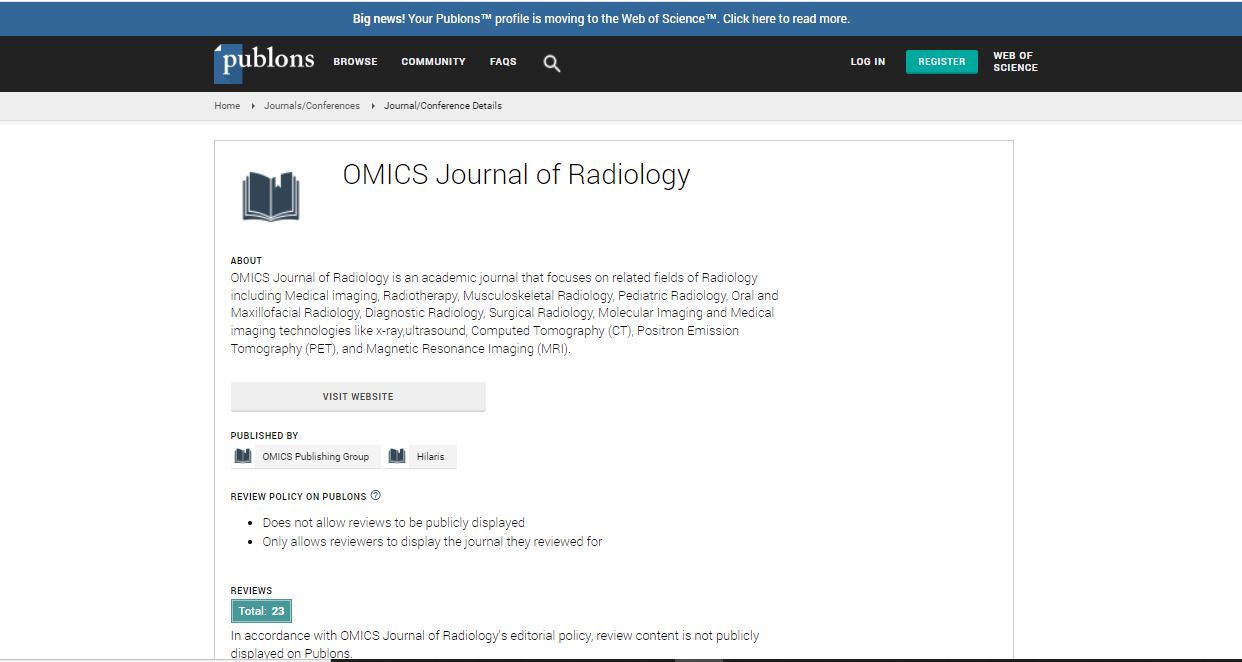Our Group organises 3000+ Global Conferenceseries Events every year across USA, Europe & Asia with support from 1000 more scientific Societies and Publishes 700+ Open Access Journals which contains over 50000 eminent personalities, reputed scientists as editorial board members.
Open Access Journals gaining more Readers and Citations
700 Journals and 15,000,000 Readers Each Journal is getting 25,000+ Readers
Google Scholar citation report
Citations : 551
Journal of Radiology received 551 citations as per Google Scholar report
Journal of Radiology peer review process verified at publons
Indexed In
- Index Copernicus
- Google Scholar
- Open J Gate
- Genamics JournalSeek
- ResearchBible
- Electronic Journals Library
- RefSeek
- Hamdard University
- EBSCO A-Z
- OCLC- WorldCat
- SWB online catalog
- Virtual Library of Biology (vifabio)
- Publons
- Geneva Foundation for Medical Education and Research
- ICMJE
Useful Links
Share This Page
Differentiation between osteoblastic, osteolytic and healthy bone tissue in CT images by texture analysis
International Conference on Medical Imaging & Diagnosis
Monika Beresova, Andres Larroza, Estanislao Arana, Ervin Berenyi, Laszlo Balkay, Silvia Ruiz-Espana and David Moratal
University of Debrecen, Hungary Universitat de Valencia, Spain Instituto Valenciano de Oncolog√?¬≠a, Spain Universitat Politecnica de Valencia, Spain
ScientificTracks Abstracts: OMICS J Radiol
Abstract
Objectives: The aim of this study was to perform texture analysis of the bone metastasis, to find and describe the difference of heterogeneity parameters, in osteolytic osteoblastic, mixed (osteolytic and osteoblastic) and healthy bone lesions. Methods: In this study, 5 patients with vertebral metastatic lesions were examined using CT images. Pathological lesions were manually segmented and binary masks were created for the all osteoblastic, osteolytic, mixed and healthy spine areas for each patient. Histogram (min, max, mean, SD, variance and SD/mean) and co-occurrence matrix (contrast, correlation, energy, entropy and homogeneity) features were extracted. For statistical comparisons, the segmented lesions were split into four groups according to their sizes: (1) 0-0.25cm3, (2) 0.25-0.5cm3, (3) 0.5-1 cm3 and (4) >1 cm3. ROC analysis and Kolmogorov- Smirnov test were done and we used non-parametric Kruskal-Wallis tests with Bonferroni correction to compare the different bone lesions. Results: Based on reliability and ROC analysis, smallest ROIs (group 1) were discarded, and osteolytic lesions were also excluded from this study, because the sizes were falling into 0-0.25 cm3 range. The maximum, mean, SD, variance, SD/mean and contrast were significantly different between mixed and healthy lesions at ROI size larger than 0.25 cm3. At the same size range, the maximum, mean, SD, variance, contrast and correlation were significantly different between healthy and osteoblastic lesions. At last, comparing the mixed and the osteoblastic lesions, the maximum, mean, SD, variance and contrast parameters were found significantly different. Conclusions: The heterogeneity parameters allowed us to describe the differences between pathological bone lesions. Texture analysis was not reliable in small lesions, but we could differentiate the healthy, the mixed and the osteoblastic areas utilizing the following textural parameters: maximum, mean, SD, variance and contrast.Biography
Monika Beresova is a PhD student at University of Debrecen. She is working on Texture Analysis in Medical Images. She works in the Department of Biomedical Laboratory and Imaging Science Faculty of Medicine (University of Debrecen) as Biomedical Engineer. She is a Lecturer for basics of MRI, Anatomy and she also works in the following research areas: NMR measurement on Earth magnetic field, image post-processing and in fMRI study.
Email: bres.monika@gmail.com

 Spanish
Spanish  Chinese
Chinese  Russian
Russian  German
German  French
French  Japanese
Japanese  Portuguese
Portuguese  Hindi
Hindi 
